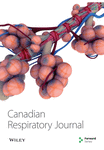Predictors of Longitudinal Changes in Pulmonary Function among Swine Confinement Workers
Abstract
OBJECTIVE: To determine predictors of longitudinal changes in pulmonary function in swine confinement workers.
DESIGN: Longitudinal study conducted from November 1989 to June 1991 and January 1994 to May 1995.
SETTING: Swine confinement workers in Saskatchewan.
PARTICIPANTS: Forty-two swine confinement workers who were studied in 1989/90 and studied again in 1994/95.
RESULTS: Of 98 male swine confinement workers (mean age ± SD 36.3±11.1 years) studied at baseline, 42 were studied again five years following. Complete information on baseline across-shift pulmonary function (preshift forced expiratory volume in 1 s [FEV1], forced vital capacity [FVC], and every 2 h FEV1 and FVC during the shift), and five-year follow-up pulmonary function (with FEV1 and FVC) were available on all 42 subjects. Mean across-shift changes (preshift measurement to last measurement of the day) at baseline were -159.8±61.7 mL in FEV1 and -35.3±65.6 mL in FVC. Mean annual rate change between baseline and follow-up for FEV1 was -53.9±61.7 mL/year and for FVC -48.9±71.6 mL/year. After adjusting for age, height, smoking and hours spent in the barn, the baseline across-shift change in FEV1 and FVC was a significant predictor of annual rate change in FEV1 (P=0.01) and FVC (P=0.02), respectively. To determine the effects of indoor air quality on longitudinal lung function decline, indoor air environmental measurements were analysed. Complete information on respiratory health and indoor air quality was available on 34 of the 42 subjects. Assessment of indoor environment of swine barns included a summer and winter measurement for airborne dust, gases and endotoxin levels. After adjusting for age, height, smoking, ammonia and hours spent in the barn, the endotoxin level (Eu/mg)was a significant predictor of annual rate change for FEV1 but not FVC.
CONCLUSIONS: These results suggest that shift change is an important predictor of longitudinal changes in lung function in swine confinement workers and that endotoxin exposures may mediate annual decline in FEV1 in these workers.




